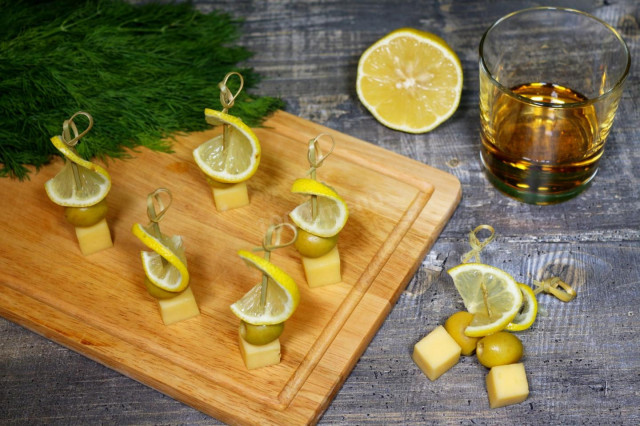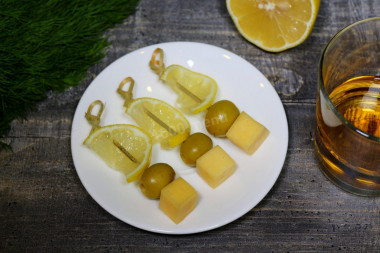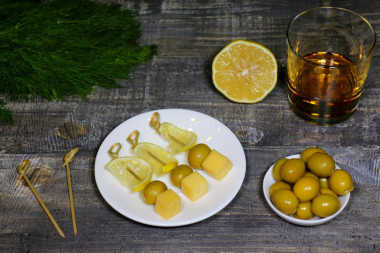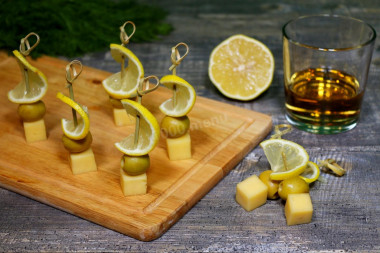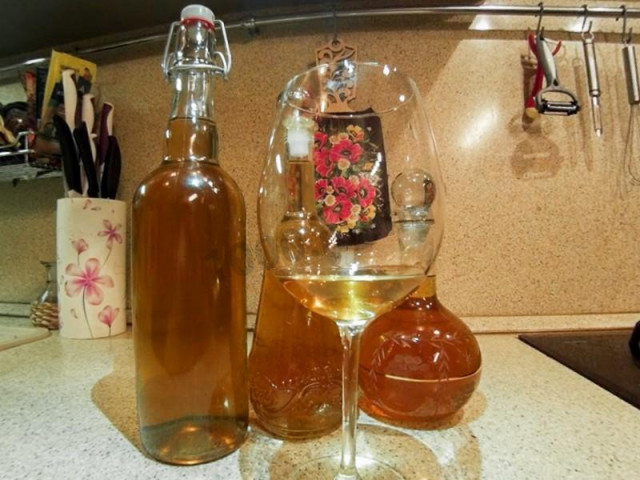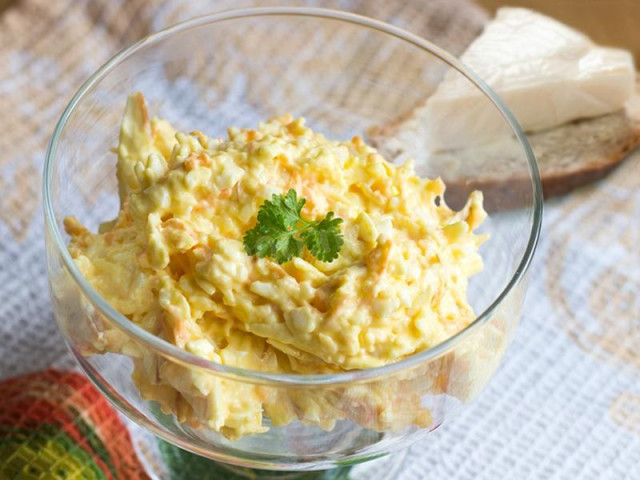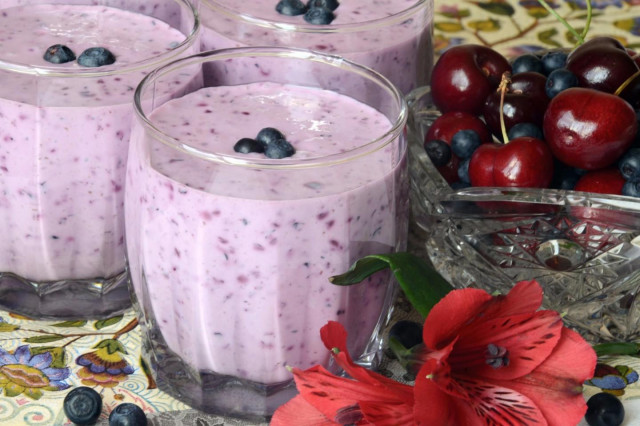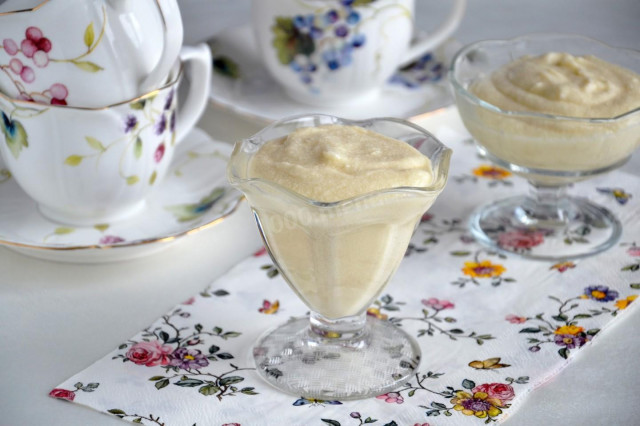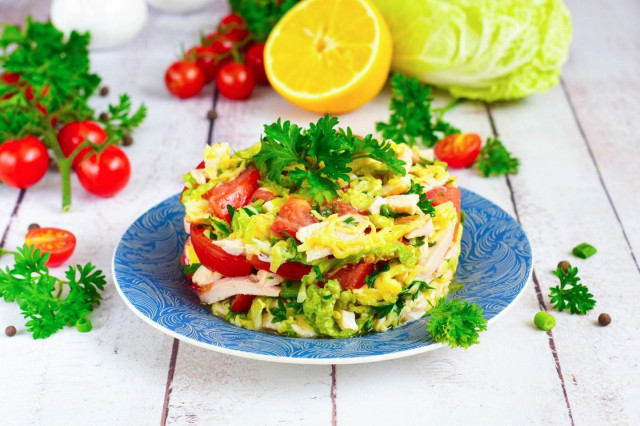Composition / ingredients
Step-by-step cooking
Step 1:
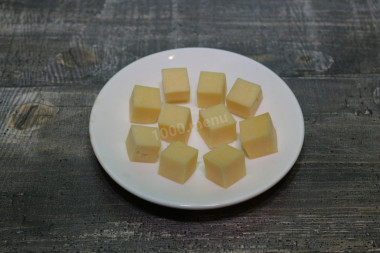
To prepare this wonderful snack, choose the right cheese. Hard cheese is best combined with olives and lemon, so take it. It will be even better if the cheese tastes sharper, but you can also use a more sweet-milky one. Cut the cheese into cubes, but not too large (about 1 cm x 1 cm, but not more than 1.5 cm), because the olives themselves are small. So it will be more beautiful, and the cheese will not clog the taste of the other ingredients.
Step 2:
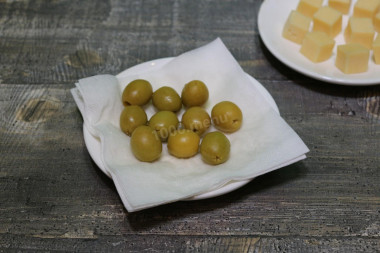
Use olives that are seedless. Open a jar of olives and use a spoon with holes to get the required amount. Put the olives on a napkin so that the excess liquid runs off, and later this liquid does not spoil the appearance of the dish. If desired, you can use stuffed olives, for example, with pepper or even anchovy.
Step 3:
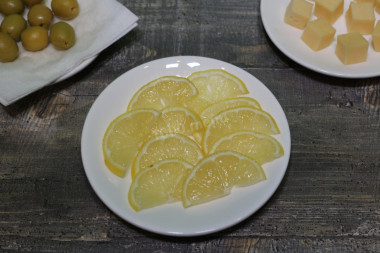
Pour boiling water over the lemon and wipe it dry. Then thinly slice it into circles. Cut the mugs in half to make lemon half rings. Lemon slices must necessarily be thinly sliced so that they bend well, they can be easily impaled on skewers.
Step 4:
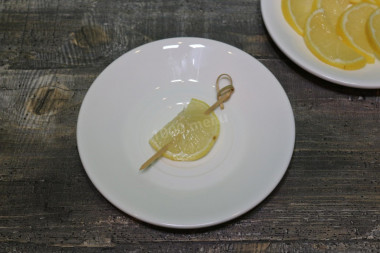
Now start assembling the canapes. To do this, use skewers or, if there are none, use ordinary toothpicks. Heat the halves of lemon circles on skewers from two corners. This way you will get a lemon that resembles a sail in shape.
Step 5:
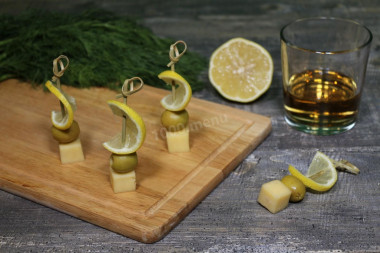
After the lemon, string green olives on skewers, then heat a piece of cheese on each skewer. If lemon and olives can be swapped, then cheese is not. It must be strung last, since it has a square shape and holds it due to hardness, which means it will be stable unlike the rest of the ingredients. The canapes are ready.
Since canapes are very simple and do not require much time to prepare them, I advise you not to prepare them in advance, since canapes tend to get weathered, have a less attractive appearance and taste. It would be best to prepare everything necessary for their assembly in advance and put them separately (in different containers) in the refrigerator, so that later they only need to be assembled, which will take 5-7 minutes, no more.
Caloric content of the products possible in the composition of the dish
- Lemon - 16 kcal/100g
- Lemon zest - 47 kcal/100g
- Dutch cheese - 352 kcal/100g
- Swiss cheese - 335 kcal/100g
- Russian cheese - 366 kcal/100g
- Kostroma cheese - 345 kcal/100g
- Yaroslavsky cheese - 361 kcal/100g
- Altai cheese 50% fat content - 356 kcal/100g
- Soviet cheese - 400 kcal/100g
- Cheese "steppe" - 362 kcal/100g
- Uglichsky cheese - 347 kcal/100g
- Poshekhonsky cheese - 350 kcal/100g
- Lambert cheese - 377 kcal/100g
- Appnzeller cheese with 50% fat content - 400 kcal/100g
- Chester cheese with 50% fat content - 363 kcal/100g
- Edamer cheese with 40% fat content - 340 kcal/100g
- Cheese with mushrooms of 50% fat content - 395 kcal/100g
- Emmental cheese with 45% fat content - 420 kcal/100g
- Gouda cheese with 45% fat content - 356 kcal/100g
- Aiadeus cheese - 364 kcal/100g
- Dom blanc cheese (semi-hard) - 360 kcal/100g
- Lo spalmino cheese - 61 kcal/100g
- Cheese "etorki" (sheep, hard) - 401 kcal/100g
- White cheese - 100 kcal/100g
- Fat yellow cheese - 260 kcal/100g
- Altai cheese - 355 kcal/100g
- Kaunas cheese - 355 kcal/100g
- Latvian cheese - 316 kcal/100g
- Limburger cheese - 327 kcal/100g
- Lithuanian cheese - 250 kcal/100g
- Lake cheese - 350 kcal/100g
- Gruyere cheese - 396 kcal/100g
- Olives - 115 kcal/100g

